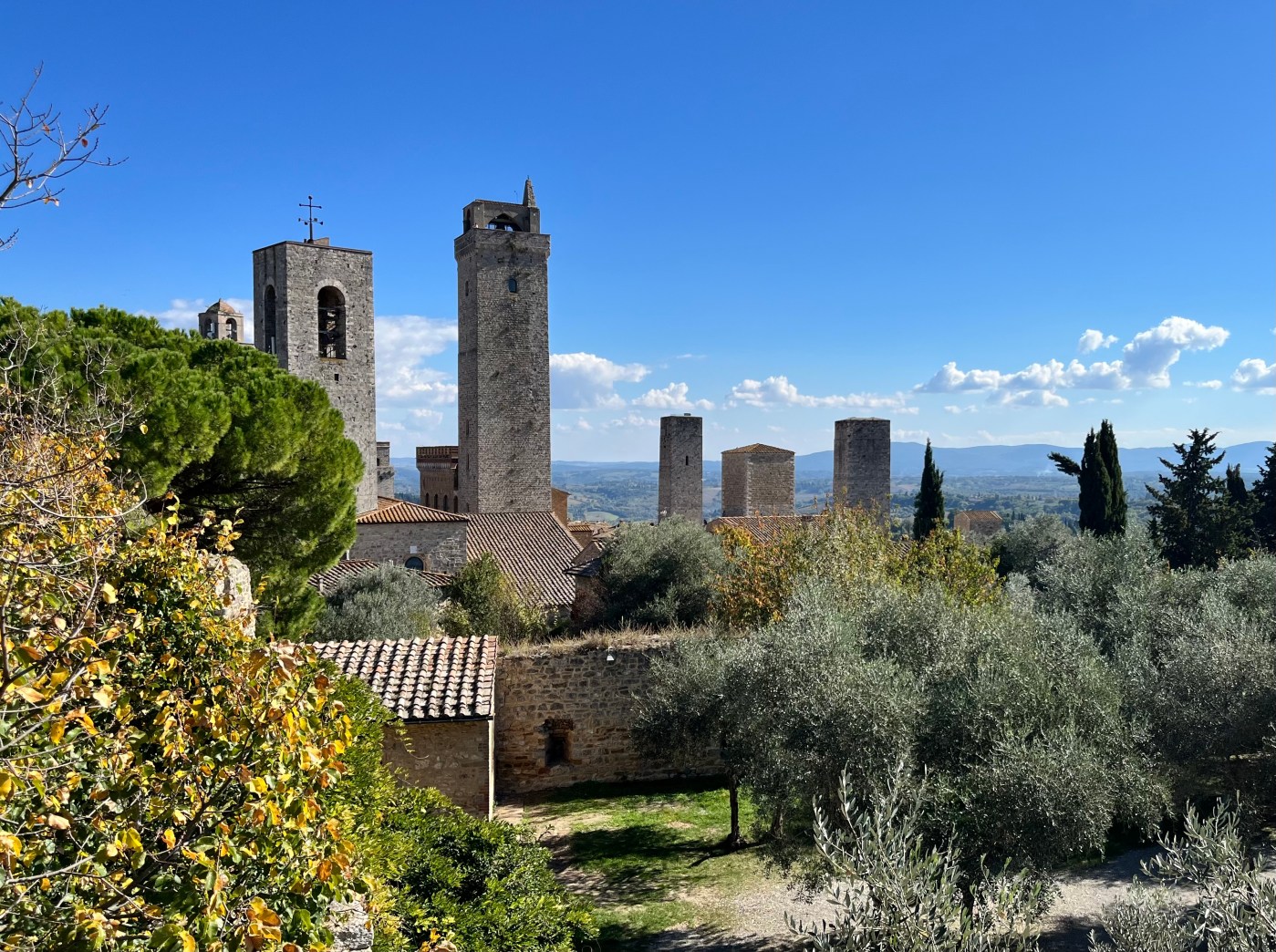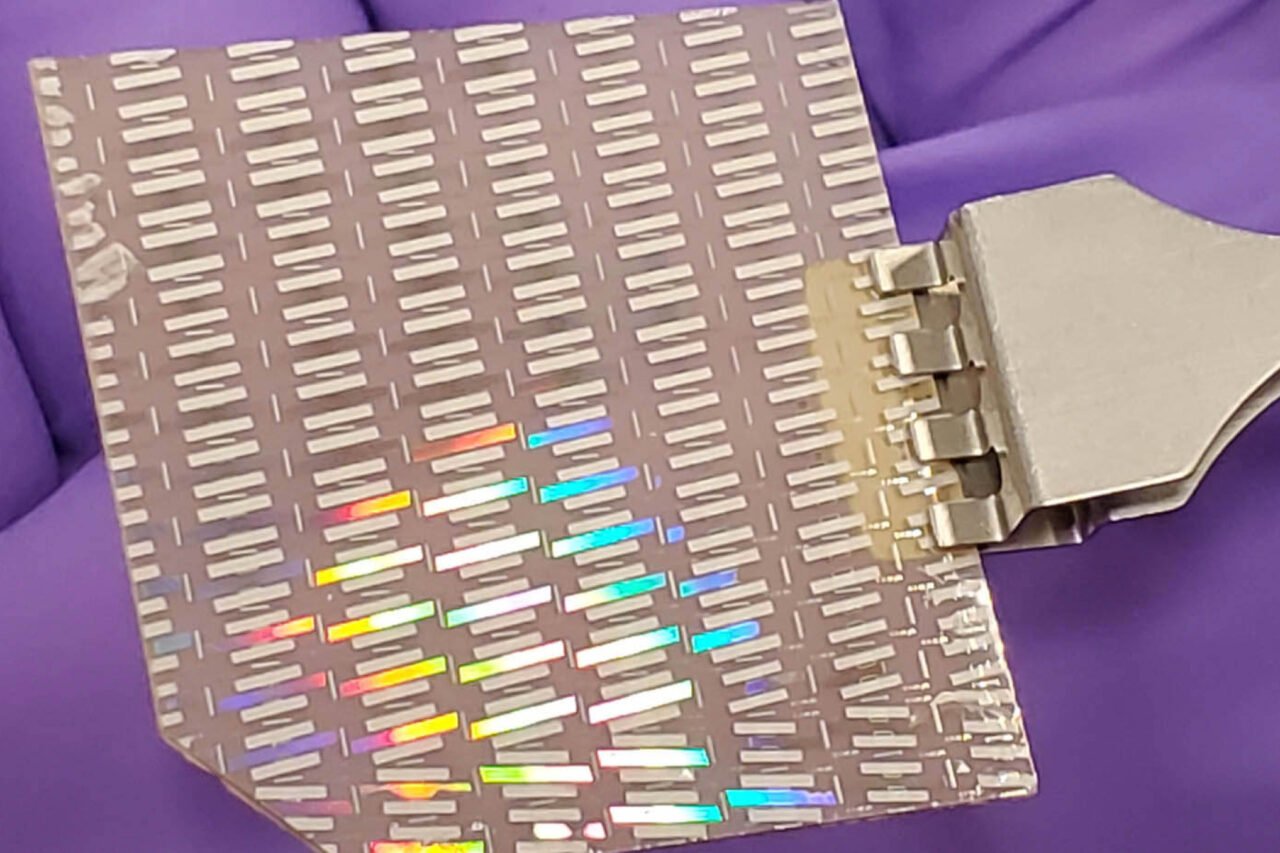As a traveler, I notice new things every time I return to a place. So when members of the Pioneer Press Travel Club began advocating for us to return to Tuscany—the destination of our first trip to Europe in 2021—I was happy to oblige. I can unequivocally say that Tuscany is as beautiful as I remembered. The medieval walled cities, the wine, the food, and the sunshine (oh, the bright, warming Tuscan sunshine!) brought back all the memories.
During those seven gorgeous days in October, I also learned a lot of new things about this region, all while hanging out with the best readers out there, all of whom I’m happy to call friends. Here’s a rundown of what we did on the tour, which was conducted by Collette Travel.
## Lucca
After a late-afternoon arrival and a fabulous welcome dinner at our historic hotel, Grand Hotel Francia and Quirinale in the famous spa town of Montecatini Terme, we set off for Lucca—a medieval walled city. Our local guide, a loud and proud Lucca resident, regaled us with the city’s history during a leisurely walk.
Lucca began as an Etruscan settlement nearly 200 years before Christ, was later a Roman colony, then an independent republic renowned for its silk trade, and eventually became part of Italy. The city inside the walls is remarkably well-preserved, and the fully intact wall itself has been ingeniously turned into a 4.2-kilometer walking trail and park system. Doctors charmingly prescribe wall walks for locals who need to lose weight or improve cardiovascular health, making it popular among residents and tourists alike.
We wandered through the Piazza dell’Anfiteatro, a public square shaped like an oval that was once a Roman amphitheater, and marveled at the marble-clad church San Michele in Foro, commissioned in 1070. Inside, massive works of religious art and the body of San Divino Armeno, one of Italy’s oldest mummified saints, are displayed in a glass coffin on the altar.
After splitting from the group for some free time, my husband and I tackled about a third of the wall walk, then stopped at the sidewalk patio of Des Arts wine bar for pasta and risotto, both studded with fresh porcini mushrooms (it was the season!). On the way back, we visited Fattoria Carmignani, a woman-owned winery, for some wine tasting paired with crostini and pumpkin soup with spicy croutons.
## Florence
The first time I visited Florence, it was just after Italy reopened following the pandemic, and while busy, it wasn’t overwhelming. This time, the city was packed—every baby boomer with means seems to have Florence on their bucket list! Locals are growing weary of the crowds; so much so that Collette no longer includes a group visit to Michelangelo’s David due to chaos and even occasional hostility in the lines. Some in our group made reservations to see it on their own, but I skipped it—once you’ve seen David, you’ve seen him.
Instead, our guide focused on the Duomo—the Cathedral of Florence—and its massive, ornate green- and pink-marble facade and dome. We craned our necks to view marble statues, columns, inlays, and mosaics, and wondered at the massive dome, completed in 1436 and still the largest masonry dome in the world. Funnily enough, our tour did not go inside the cathedral, which is reportedly much sparser compared to its lavish exterior.
Florence is famous for its leather—I treated myself to a purse, knowing it will last me at least another four years—and its gold, with a few travelers making purchases. During free time, my husband and I wandered across the Ponte Vecchio, the stone bridge lined with jewelry stores. The view from the middle, with the reflections along the Arno River, is breathtaking.
On the quieter side of the river, we visited one of Florence’s famous wine windows—tiny portals used during the plague for contactless transactions, now serving glasses of wine. Sipping a crisp white on a quiet Florentine street felt cosmopolitan and cool.
We attempted to visit All’Antico Vinaio for the famous mortadella sandwich, but the line snaked around the corner. Instead, we found a small deli offering one of the best sandwiches I’ve ever tried: mortadella, burrata cheese, and pistachio pesto on spongy focaccia—no regrets!
Despite the crowds, this second exploration convinced me that I could return on my own and discover quieter, equally charming parts of Florence.
## Montecatini Terme & Montecatini Alto
On my previous trip to Tuscany, we stayed in Montecatini but I chose to visit Siena instead of touring the city. This time, Montecatini Terme was on the agenda, and I’m so glad! Known as a spa town, it isn’t quite what Americans imagine; for centuries people have come here to drink the saline, mineral-rich water (about 90°F) seeking cures for various ailments.
The first written record of the spa dates to 1201, but the city itself took off at the end of the 18th century. Once a top spot for celebrities and tourists alike, its long history is reflected in bronze medallions on the sidewalk honoring famous visitors. The biggest remaining spa, Terme Tettuccio, is easily found by following this sidewalk.
Spa treatments are followed by walks, and the city is designed around a sprawling park full of walking trails and benches. Sadly, after the state ended spa treatment sponsorships—even covering hotel stays—Montecatini Terme lost some of its luster. The town hall has a leaky roof the city can’t afford to fix, and there are empty storefronts, including one former spa and its historic hotel. Still, there’s much to love: excellent restaurants, shopping, and a beautiful square. Tour groups now keep the town alive, choosing Montecatini for its hotel space and central Tuscan location.
That night, we took the funicular up to Montecatini Alto, the medieval hilltop city above. The view from the top is incredible, and there’s a charming square with shops and restaurants, and, if you climb further, an ancient fortress. At Ristorante La Torre, we shared Bistecca alla Fiorentina—a bone-in loin steak from a young heifer with unmatched flavor. It’s lean and must be served rare, so if you dislike red-inside steak, beware!
## Pisa
Many Tuscan locals dislike Pisa and its leaning tower due to the throngs of tourists, but the marble tower, leaning since its completion in the 14th century, is striking and worth a bucket-list visit. The entire square (Piazza dei Miracoli) is stunning, and if you have time, visit the adjacent cemetery, Camposanto Monumentale. The Gothic cemetery contains medieval frescoes—some restored, some faded from flooding—and beneath your feet, important townspeople and religious figures are entombed in local marble. Emptied Roman sarcophagi line the sides as well.
This time, my husband and I decided to climb the tower—a vertigo-inducing challenge with narrow stairs and two-way foot traffic, but numbers are capped to ensure safety. Modern fortifications mean the tower and its famous lean should last centuries.
For lunch, our tour manager led us to Pizzeria Il Montino for cecina, a simple chickpea pancake stuffed into focaccia—it’s vegan and delicious! For about $3, we enjoyed this local specialty.
Afterward, we traveled to a local agritourismo farm for a cooking class. Agritourismo allows guests to stay at farm estates for a relaxing, rural vacation. Many travelers made homemade pasta for the first time! (I missed my trusty KitchenAid.) We enjoyed an excellent meal as the fiery Tuscan sunset illuminated the vineyards.
## Siena
Siena is my favorite of the Tuscan cities I’ve visited. This medieval hilltop city is famous for its annual Palio horse race, held in the (deceptively small) Piazza del Campo since the 1600s. Each contrada (neighborhood) sponsors a horse, represented by unique animals signaled by statues, door knockers, fountains, and flags. Each contrada also has a museum dedicated to its race participation.
We toured the museum for Selva (forest) contrada, represented by the rhinoceros. Race winners get a silk banner and bragging rights—the banners and medieval costumes are displayed in the museums.
After our tour, we enjoyed lunch in the square, watching residents and tourists bask in the sunshine. We shared pici (thick spaghetti) two ways—in a simple garlic-tomato sauce (all’Aglione), a local specialty, and cacio e pepe (cheese and pepper). Both were delicious.
We squeezed in a visit to the breathtaking Siena Cathedral. Ornate black-and-white striped columns, marble busts, mosaic flooring, and a stunning marble pulpit made it worth every euro. I missed the interior last time and highly recommend seeing it if you can.
## San Gimignano
Our last day in Tuscany arrived too soon! We visited a delightful cheese cooperative, where workers and happy cows live in harmony. After our tour, we sampled a cheese board with honey, jelly, popped farro, and yogurt—all produced on-site.
Then we wandered through San Gimignano, famous for its 14 surviving medieval towers built by competing families to flaunt wealth. Climb to the fortress ruins for a panoramic view of the Tuscan countryside and capture the towers in one photo.
After exploring, we enjoyed Vernaccia (a local crisp white wine) and floral saffron risotto topped with crispy, smoky speck ham—both ingredients sourced nearby—at a restaurant beside the town church. San Gimignano has a vibrant art community, and we purchased a lovely painting from a local artist set up across the street.
Our farewell dinner at Antica Osteria Toscana in Montecatini Terme featured house red wine, ribollita (bread soup), and the most melt-in-your-mouth pork chop I’ve ever tasted.
## My Conclusion
I can’t wait to return to Tuscany for a third time—whether with readers or on my own. The food, wine, and scenery are just that special. If you haven’t been, put it on your bucket list!
—
### Want to Travel with Jess?
We have a handful of spots left for our Scotland tour, May 10–19, 2027! It’s a 10-day adventure featuring Edinburgh, Inverness, the Isle of Skye, Glasgow, and more. We’ll visit a family-run Highlands farm (with sheepdogs at work), marvel at Neolithic ruins on the Orkney Islands, tour castles, hear a bagpipe demonstration, and taste that famous Scotch whisky at a local distillery.
For info or to book, [go to our Collette tour page](https://groups.gocollette.com/en-US/link/1371575).
https://www.twincities.com/2025/11/16/pioneer-press-reader-trip-tuscany/

